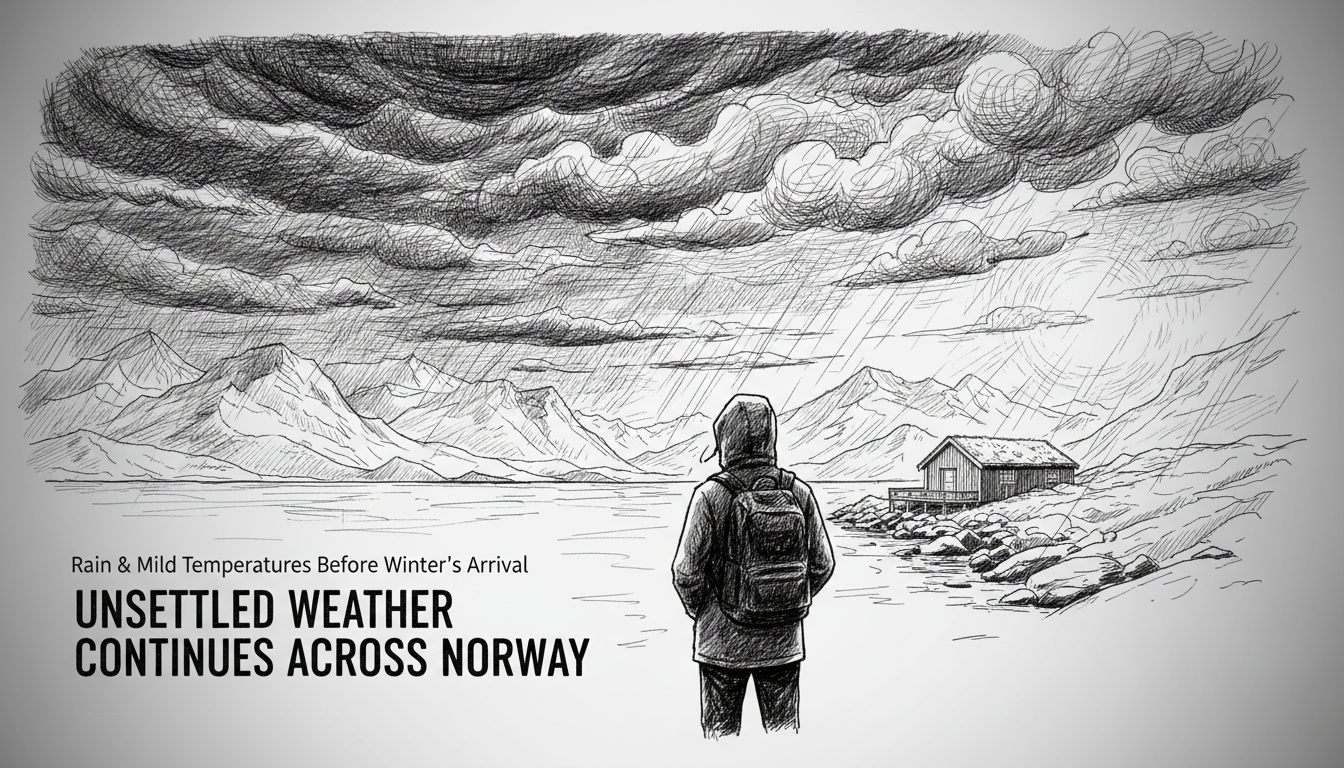Put away your skis and keep your umbrella handy. Norway faces at least another week of autumn weather before winter arrives.
Meteorologists say patience is required for those dreaming of snowy conditions. The country will experience typical November weather in the coming days.
"We have some autumn-like days ahead," said meteorologist Marit Berger. "Temperatures will be higher than expected for early November."
Southern Norway should prepare for significant rainfall, particularly overnight Tuesday and throughout Wednesday. Western regions will see the most precipitation, but the entire southern area can expect gray and dull conditions.
"It will be wet and mild," the meteorologist summarized about the upcoming forecast.
Both Oslo and Bergen could see temperatures reaching 12 degrees Celsius mid-week. Tuesday may also bring periods of stronger winds, especially along the western coastline.
Eastern Norway has the best chance of glimpsing sunshine, though meteorologists caution that appearances will be brief. "There will be little sun overall, but it might peek through occasionally," Berger noted.
North of Stad, conditions might improve slightly this week despite ongoing rain and cloud cover. "It will be mild, with occasional coastal winds," the meteorologist added.
Northern Norway also anticipates mild days, with Wednesday standing out for significant wind and precipitation.
Hope exists for winter enthusiasts. Forecasts suggest temperatures will drop toward week's end.
The weekend could bring more winter-like conditions, particularly in mountain areas and the far north. Colder weather appears likely.
Meteorologists point to a weather phenomenon called "sudden stratospheric warming" as potentially making this winter noticeably colder than usual. This atmospheric event typically leads to colder temperatures across Scandinavia.
Norwegian winters often fluctuate between mild coastal conditions and colder inland temperatures, but this year's forecast suggests a potentially sharper transition to winter conditions.
The extended autumn weather pattern reflects broader climate variability affecting the Nordic region, where seasonal transitions are becoming less predictable.
